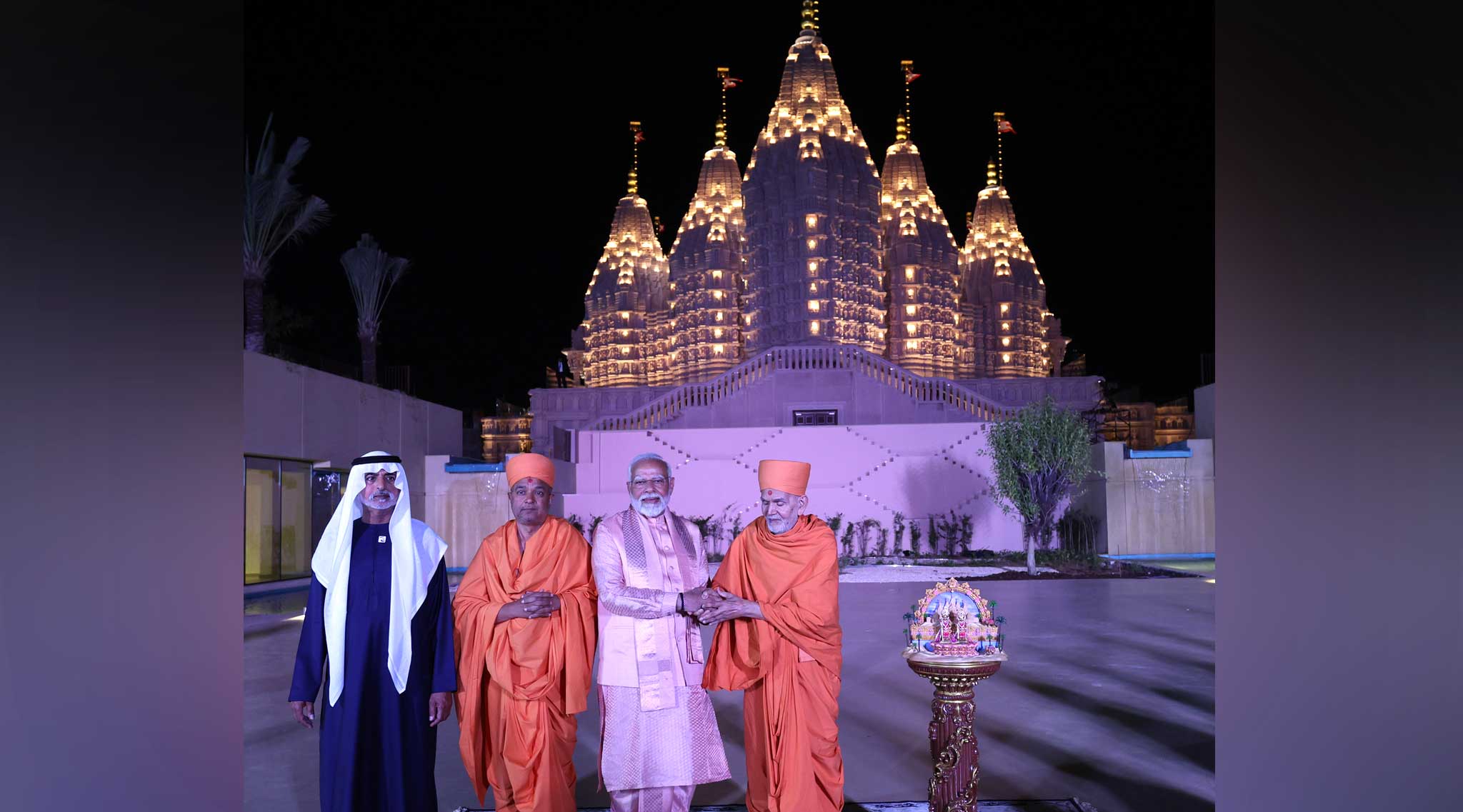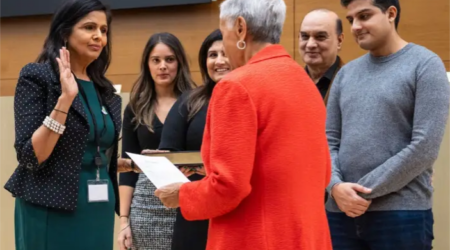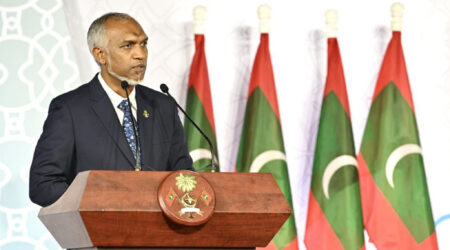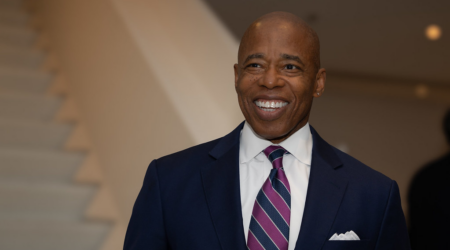In a significant milestone for the Indian community in the Middle East, Prime Minister Narendra Modi Wednesday inaugurated Abu Dhabi’s first Hindu Mandir, which is also the largest in the region.
Upon arrival at the grand temple complex built by the Bochasanwasi Shri Akshar Purushottam Swaminarayan Sanstha (BAPS), the Prime Minister was greeted by the members of the Indian community.
Spread over 27 acres and built at a cost of over Rs. 700 crores, the BAPS Hindu temple is also seen as a mark of the deepening ties between India and the United Arab Emirates.
“I consider the construction of BAPS temple here as a reflection of your love for India and your vision for the bright future of UAE. This would not have been possible without your support. During our first meeting, I had made a simple request for you to look into it and you took a prompt decision, telling me ‘put your finger on any piece of land, you will get it’,” the PM had said.



The Prime Minister profusely thanked the President of UAE, Sheikh Mohammad Zayed Al Nahyan, for making the grand temple in Abu Dhabi a reality and said he has not only won the hearts of Indians living in the Gulf nation but also of 140 crore Indians.
PM Modi also participated in a ‘global aarti (prayer)’, which was performed simultaneously at over 1500 Mandirs built by BAPS.
Before inaugurating the temple, he offered water in the virtual Ganga and Yamuna rivers at the temple and met people from different religions who played a role in its construction.
Several Indian celebrities including actors Akshay Kumar, Dilip Joshi, and Vivek Oberoi among others also attended the opening ceremony of the temple.
BAPS Hindu Mandir Abu Dhabi
Created by: BAPS Swaminarayan Sanstha
Total area: 27 acres, Mandir complex: 13.5 acres, Parking: 13.5 acres
Height: 108 ft
Sensors: 150
Marble used: 50, 000 cubic ft
Sandstone used: 1, 80, 000 cubic ft
Bricks: 18, 00, 000
Man hours – till date: 6, 89, 512

Who can visit the Mandir?
Just like all other BAPS mandirs around the world, this mandir is open to everyone and anyone.
Architecture Style
Traditional Nagar Style
Front side panel having life size panels of universal values, stories of harmony from different cultures, representation of Avatars and Hindu Spiritual leaders
Key Architectural Features
External facade of the mandir uses pink sandstone from Rajasthan
Mandir interior uses Italian marbles
2 central domes, ‘Dome of Harmony’ and ‘Dome of Peace’
7 shikhars(spires), 12 Samran Shikhars known as ‘ghummat’
7 shikhars are representative of the seven Emirates of the UAE
402 pillars
25,000 stone pieces
96 bells and gaumukhs are installed around the path leading to the temple.
Nano tiles have been used, which will be comfortable for visitors to walk even in hot weather.
On the top left of the temple is a stone carving of the scene of His Holiness Pramukh Swami Maharaj envisioning the temple in Abu Dhabi in 1997.
On the upper right side of the temple, the memory of the time when His Holiness Mahant Swami Maharaj laid the foundation stone in 2019 is carved.
No ferrous material is used in the temple.
Different types of pillars can be seen in the temple like circular, hexagonal
There is a special pillar, called ‘Pillar of pillars’, with around 1400 small pillars carved into it.
Human co-existence and harmony are depicted in a dome through the carvings of the elements of earth, water, fire, air, plants etc.
Deities in Seven Shrines
Deities from North, East, West and South part of India representing Hindu spirituality
This is how all 7 shrines will have various deities –
Bhagwan Ram, Sitaji, Lakshmanji and Hanumanji
Bhagwan Shiv, Parvatiji, Ganpatiji, Kartikeyaji
Bhagwan Jagannath
Bhagwan Radha-Krishna
Shri Akshar-Purushottam Maharaj (Bhagwan Swaminarayan and Gunatitanand Swami)
Bhagwan Tirupati Balaji and Padmavatiji
Bhagwan Ayappaji
Carvings at Shrines: Encyclopedia of Scriptures
In the shrine dedicated to Bhagwan Shiv, Shiv Puran is carved, 12 Jyotirlings are carved
In the shrine of Bhagwan Jagannath, Jagannath Yatra/Rathyatra is carved.
In the shrine dedicated to Bhagwan Krishna, Bhagwat and Mahabharat are carved.
Similarly, in the shrine dedicated to Bhagwan Swaminarayan, Bhagwan Ayappa, their life, work, and teachings are carved.
In the shrine of Bhagwan Ram, Ramayan is carved.
Plinth of Values and Holy Rivers
Buildings surrounding the mandir are modern, minimalistic and monolithic
Holy river flows created surrounding the mandir; Ganga river going right of the temple; Yamuna river going left of the temple. Water from these holy rivers brought here.
Varanasi like ghat created where Ganga river passes
Symbolically 7 shikhars pay respects to the seven emirates of the UAE
At the entrance of the Mandir, eight murtis created symbolizing eight values, i.e. murti of Faith, the murti of Charity, the murti of Love. These eight murtis eight values, that our Sanatan Dharma is founded upon
There are murtis of historic figures, sages, and acharyas, who have sustained these values, that plinth is known as the plinth of values
Value Stories from other Ancient Civilizations
Apart from Indian civilization, stories are taken from-
Maya civilization
Aztec civilization
Egyptian civilization
Arabic civilization
European civilization
Chinese civilization
African civilization etc.
Mandir amenities
Assembly hall – capacity of 3000 people, Community Center, Exhibitions, Classrooms, Majlis
Special mention
A Muslim king donated land for a Hindu Mandir, where the lead architect is a Catholic Christian, the Project Manager is a Sikh, Foundational designer is a Buddhist, the Construction Company is a Parsi group; and the director comes from a Jain tradition.










